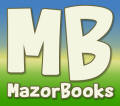|



|
Jewish Wedding Jewelry,
jewish wedding ring,Bar Mitzvah jewelry, Bat Mitzvah jewelry
Jewelry and Accessories
The
Wedding Ring
Formal wedding ceremonies are an extra measure in the eyes of halacha
(Jewish law). Traditionally, when a woman accepted a wedding ring, she
was signaling her change of personal status and her agreement to the
provisions in the ketubah.
Coins, property deeds, or even fruit qualified to establish a marriage,
but rings became customary. Talmudic rabbis decried the use of rings at
first. But the ring’s beauty and convenience as a wearable symbol of
marriage prevailed. Rings were regularly presented at Jewish weddings by
the eighth century in Israel and by the ninth century in Babylon (modern
day Iraq).
Jewish tradition favors smooth bands, in part, because they have readily
ascertainable value. Halacha gets technical here, but part of the
nuptial formula translates as “Behold you become holy unto me with this
ring.” If “this ring” was not what it appeared to be, then a marriage’s
status as a legal entity would be called into question. Reform Judaism
steps away from the overtones of acquisition that stood behind the ring
presentation and does not require a wedding ring to be plain or without
stones.
Wide use of plain wedding rings minimized a poor bride’s embarrassment.
Also, kabbalistic sources suggested smooth rings would portend an
untroubled life. Georgian Jews adapted a local custom and placed the
ring into the kiddush cup used at the ceremony. Some Syrian Jewish
communities designate special marriage coins to be used at weddings. A
deed, fruit, prayer book, or anything with real monetary value is valid.
Rings and more
Gifts are exchanged between bride and groom all through the engagement
period.
In some circles it is customary to present the bride with a piece of
jewelry during every Jewish holiday that falls during the engagement
period.
The grooms too, are the recipients of gifts. In the orthodox community,
those gifts are often sets of "Seforim" books, such as the Talmud,
Mishna Brurah, and more. But cufflinks, watches, and money clips are
also on the list of happily accepted overtures.
Practical Advice - Questions You Want Answered - Check List
And A
Few Words of Caution
A piece of jewelry made with precious metals and gemstones is an instant
heirloom, whether it's a gift or purchased for one's self. The recent
explosion of e-commerce means that jewelry buyers are confronted with
more options - and pitfalls - than ever before. Shoppers should know
that the laws that apply to shopping in a bricks-and-mortar retail store
also apply to the Internet.
Elizabeth Florence, Director of the Jewelry Information Center, a
nonprofit trade association based in New York City say: "The key to
buying fine jewelry is where one shops. Trust in the jeweler and/or the
venue is vital." Following are some tips from the JIC:
1. Buy from
someone you trust:
Shop from a well-established professional jeweler. Ask a friend for a
recommendation, or check with the Chamber of Commerce or Better Business
Bureau. Look for a jeweler who is affiliated with a professional trade
association, such as Jewelers of America (JA), that requires high
ethical standards of its members and provides them with ongoing
education. Get an itemized receipt and the return policy in writing.
2. Buying on the Web.
Shop only on Web sites that list a phone number, address and/or "Contact
Us" e-mail option. For on-line purchases, always use a credit card
rather than a debit card. Look for a liberal return policy with a full
refund. Be sure to note the window of time in which the jewelry may be
returned! Ask for the original packaging and an itemized receipt. When
buying diamonds, ask for a grading report from an independent
gemological laboratory. When buying watches on-line, be aware that some
manufacturers' warrantees are valid only if the watch is purchased at an
authorized dealer.
3. Don't be dazzled by discounts.
If a venue is routinely offering unbelievable discounts of 50% or more,
the sale is probably just that--unbelievable. Savvy shoppers may find
that the "drastic discount" price is actually the normal retail price
elsewhere.
4. Ask about the quality mark and registered trademark.
With gold jewelry, the karat mark or quality mark indicates the purity
of the piece: "14K" means 58.3% pure gold; "18K," 75% pure. In other
words, in a piece of 14k gold jewelry, 14 of its 24 parts are pure gold;
the other 10 are alloy, which could be any number of different metals,
added for strength and sometimes to change the color (to rose gold,
white gold, etc.) Platinum - the hardest and most rare metal - is most
often marked "PLAT" or "950 PLAT." Sterling silver pieces are usually
stamped "925." For pieces manufactured in the U.S., if the quality mark
appears, the piece is required by federal law to also be stamped with
the manufacturer's trademark, which ensures that the manufacturer stands
behind the authenticity of the piece.
5. When buying gemstones, find out if the stone has been treated
in any way to improve its beauty.
Gem treatments such as oiling and heating are accepted industry
practices. However, FTC guidelines require that these treatments be
disclosed to the buyer because they may affect the care and cleaning of
the stone. Exercise your rights and be informed.
6. When buying diamonds, look for the 4 C's.
They are cut, color, clarity, and carat weight. Cut is arguably the most
important, because a skillful cut is what will unleash the fire and
brilliance in a diamond. Cut, which refers to the faceting, is not to be
confused with shape - such as marquise, oval, princess (square), etc. As
to color, grading begins at D; the deeper into the alphabet one goes,
the poorer the color. In a store, ask to see loose diamonds on a sheet
of pure white paper and note any contrast. Clarity refers to the
presence of - or lack of - imperfections such as bubbles, spots or lines
called inclusions. Clarity is graded on a scale ranging from flawless
(FL or IF) to imperfect (I).
7. Cultured pearls.
Look for surface cleanliness: an absence of any scarring or pitting.
Also important is the pearls' luster: they should be glowing with
iridescence, not chalky or dull. When purchasing a strand of cultured
pearls, be sure there is a knot between each pearl. This insures that if
the strand breaks, the pearls won't skitter across the floor. In
addition, the knots keep the pearls from rubbing against each other.
Before you purchase, check to see that the pearls are well matched in
color and lustre, and that they graduate gracefully in size, growing
smaller toward the clasp. Roll the strand of pearls on a flat counter
top to be sure they don't wobble; this will tell you that the pearls
have been drilled exactly through their centers and that they will lay
beautifully around one's neck.
Fine jewelry is unlike any other purchase. Jewelry that is wisely bought
and well cared for will be treasured for generations to come.


|
|








